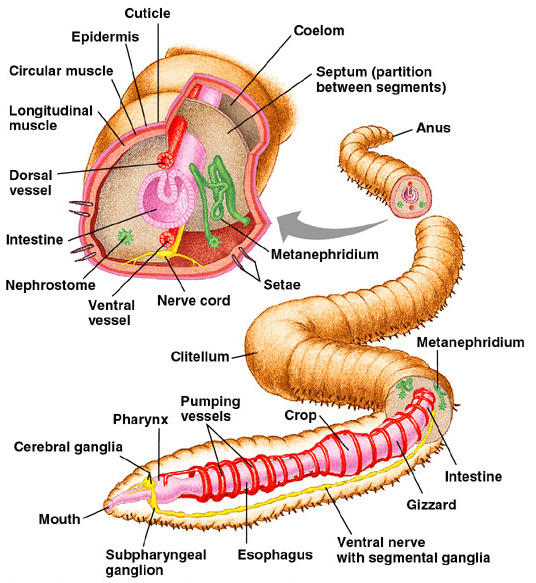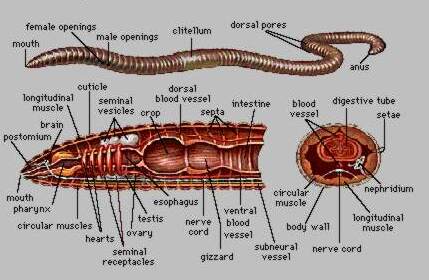When we think of animals with hearts, we often imagine mammals with a single, powerful heart pumping blood through their bodies. However, the natural world is full of surprises, and some creatures have developed remarkable adaptations to survive in their environments. One such creature is the earthworm, which has a fascinating circulatory system involving multiple “hearts”—or rather, heart-like structures. While it doesn’t have 13 hearts in the traditional sense, the earthworm’s anatomy is intriguing and unique.
In this article, we’ll explore the circulatory system of earthworms, break down how their “hearts” work, and why these structures are vital to their survival.

Earthworms are part of the phylum Annelida, a group of segmented worms that live in a wide variety of environments, from soil to freshwater ecosystems. While they might seem like simple creatures, their internal structure is quite complex, especially when it comes to their circulatory system.
Technically speaking, earthworms do not have 13 hearts in the way mammals have a single organ dedicated to pumping blood. Instead, they have five pairs of aortic arches, which are often referred to as “pseudo-hearts” or heart-like structures. These aortic arches play a similar role to a heart, as they help pump blood throughout the earthworm's body.
Since earthworms are segmented creatures, each segment contains a portion of their circulatory system. The five pairs of aortic arches are located near the front of the worm's body, close to the esophagus, and they help move blood between the dorsal (upper) and ventral (lower) blood vessels.
In total, earthworms have 10 aortic arches or “hearts,” not 13. The idea of them having 13 hearts may come from a misunderstanding or miscommunication, but the truth is no less fascinating. These arches help pump blood, which is necessary for the worm’s respiration and survival.
Earthworms have a closed circulatory system, meaning that their blood is contained within vessels, similar to humans and other vertebrates. However, instead of a single heart doing all the work, their aortic arches function as muscular pumps that contract and relax, pushing blood through the body.
Here’s how the process works:
Dorsal blood vessel: The primary blood vessel that carries blood from the back of the earthworm to the front, where the aortic arches are located.
Ventral blood vessel: Once the aortic arches pump the blood, it moves through the ventral blood vessel toward the worm's back, supplying oxygen and nutrients to the tissues along the way.
Capillaries: Like humans, earthworms have tiny blood vessels called capillaries that help distribute blood throughout their body, ensuring that every segment receives the necessary oxygen and nutrients.
While these aortic arches may not be true hearts, they perform the same essential function of circulating blood, which helps earthworms breathe through their skin and survive in their environment.

You might wonder, why does an earthworm need multiple hearts, or heart-like structures, when humans and other animals can get by with just one? The answer lies in the earthworm’s unique body structure and lifestyle.
Earthworms are elongated creatures with segmented bodies, and their circulatory system must extend the entire length of their body. A single heart would not be efficient enough to pump blood all the way from one end of the worm to the other. Instead, having multiple aortic arches helps the earthworm circulate blood throughout its long body more effectively, ensuring that every segment gets the oxygen and nutrients it needs.
Additionally, earthworms use their skin for respiration. Because they lack lungs or gills, oxygen diffuses directly through their moist skin and into the capillaries beneath it. This means that their circulatory system needs to be highly efficient to distribute oxygen-rich blood throughout their body, which is where the aortic arches come in.
Aside from their multi-heart anatomy, earthworms have several other fascinating features that make them one of nature’s most resilient and important creatures.
Regeneration Abilities: While earthworms can’t grow back an entire new body from a small piece, they can regenerate parts of their body if injured. This ability varies depending on the species and where the injury occurs.
Important for Soil Health: Earthworms play a critical role in maintaining healthy soil by breaking down organic matter, aerating the soil, and facilitating nutrient cycling. Their burrowing helps create spaces for air and water to reach plant roots, which is essential for plant growth.
Hermaphroditic: Earthworms are hermaphrodites, meaning each individual has both male and female reproductive organs. However, they still need to mate with another worm to reproduce, exchanging sperm during the process.
Breath Through Skin: Earthworms do not have lungs. Instead, they breathe by absorbing oxygen directly through their skin. Their skin must remain moist for this to happen, which is why you often find them on the surface during rain, when the ground becomes waterlogged and they need to escape to breathe.
Size and Lifespan: The average earthworm ranges from a few centimeters to about 30 centimeters in length. Some species, however, can grow to be much larger. Earthworms typically live for several years, though some species can live up to eight years in the right conditions.
While the idea of an animal having 13 hearts may seem fantastical, the truth is that earthworms possess a unique circulatory system that includes 10 heart-like aortic arches. These structures are crucial for pumping blood throughout the worm’s long body and ensuring its survival in various environments. Earthworms may be small, but their anatomy is incredibly complex and finely tuned to their role in the ecosystem.
Next time you see an earthworm in your garden, you can appreciate just how remarkable these creatures are—not only for their contribution to healthy soil but for the fascinating way they’ve adapted to life underground with their multiple “hearts.”
animal tags: hearts
We created this article in conjunction with AI technology, then made sure it was fact-checked and edited by a Animals Top editor.